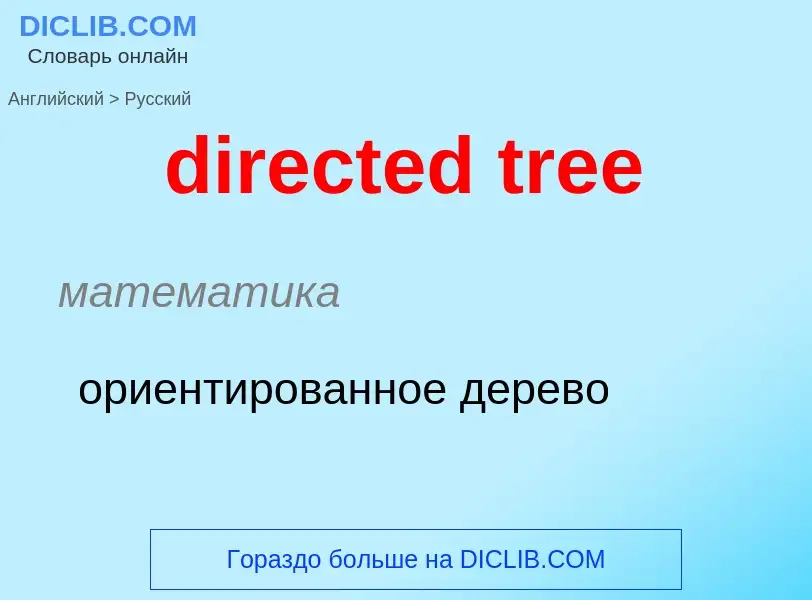Перевод и анализ слов искусственным интеллектом ChatGPT
На этой странице Вы можете получить подробный анализ слова или словосочетания, произведенный с помощью лучшей на сегодняшний день технологии искусственного интеллекта:
- как употребляется слово
- частота употребления
- используется оно чаще в устной или письменной речи
- варианты перевода слова
- примеры употребления (несколько фраз с переводом)
- этимология
directed tree - перевод на русский
математика
ориентированное дерево
математика
ориентированное дерево
Определение
Википедия
In graph theory, a tree is an undirected graph in which any two vertices are connected by exactly one path, or equivalently a connected acyclic undirected graph. A forest is an undirected graph in which any two vertices are connected by at most one path, or equivalently an acyclic undirected graph, or equivalently a disjoint union of trees.
A polytree (or directed tree or oriented tree or singly connected network) is a directed acyclic graph (DAG) whose underlying undirected graph is a tree. A polyforest (or directed forest or oriented forest) is a directed acyclic graph whose underlying undirected graph is a forest.
The various kinds of data structures referred to as trees in computer science have underlying graphs that are trees in graph theory, although such data structures are generally rooted trees. A rooted tree may be directed, called a directed rooted tree, either making all its edges point away from the root—in which case it is called an arborescence or out-tree—or making all its edges point towards the root—in which case it is called an anti-arborescence or in-tree. A rooted tree itself has been defined by some authors as a directed graph. A rooted forest is a disjoint union of rooted trees. A rooted forest may be directed, called a directed rooted forest, either making all its edges point away from the root in each rooted tree—in which case it is called a branching or out-forest—or making all its edges point towards the root in each rooted tree—in which case it is called an anti-branching or in-forest.
The term tree was coined in 1857 by the British mathematician Arthur Cayley.

